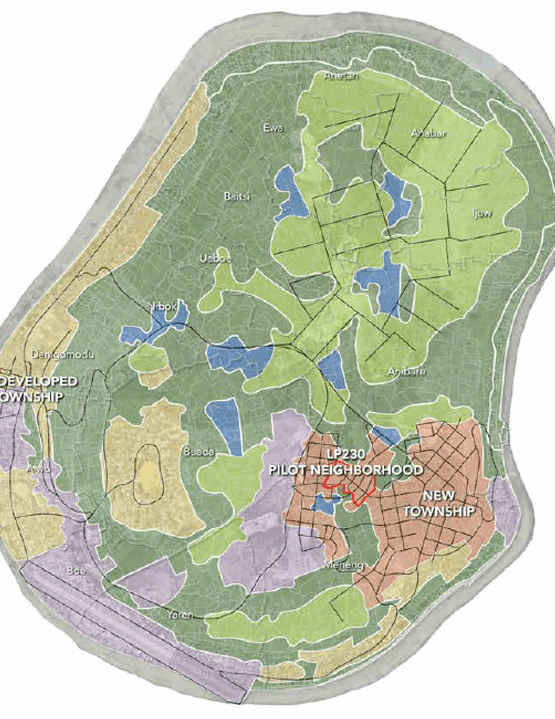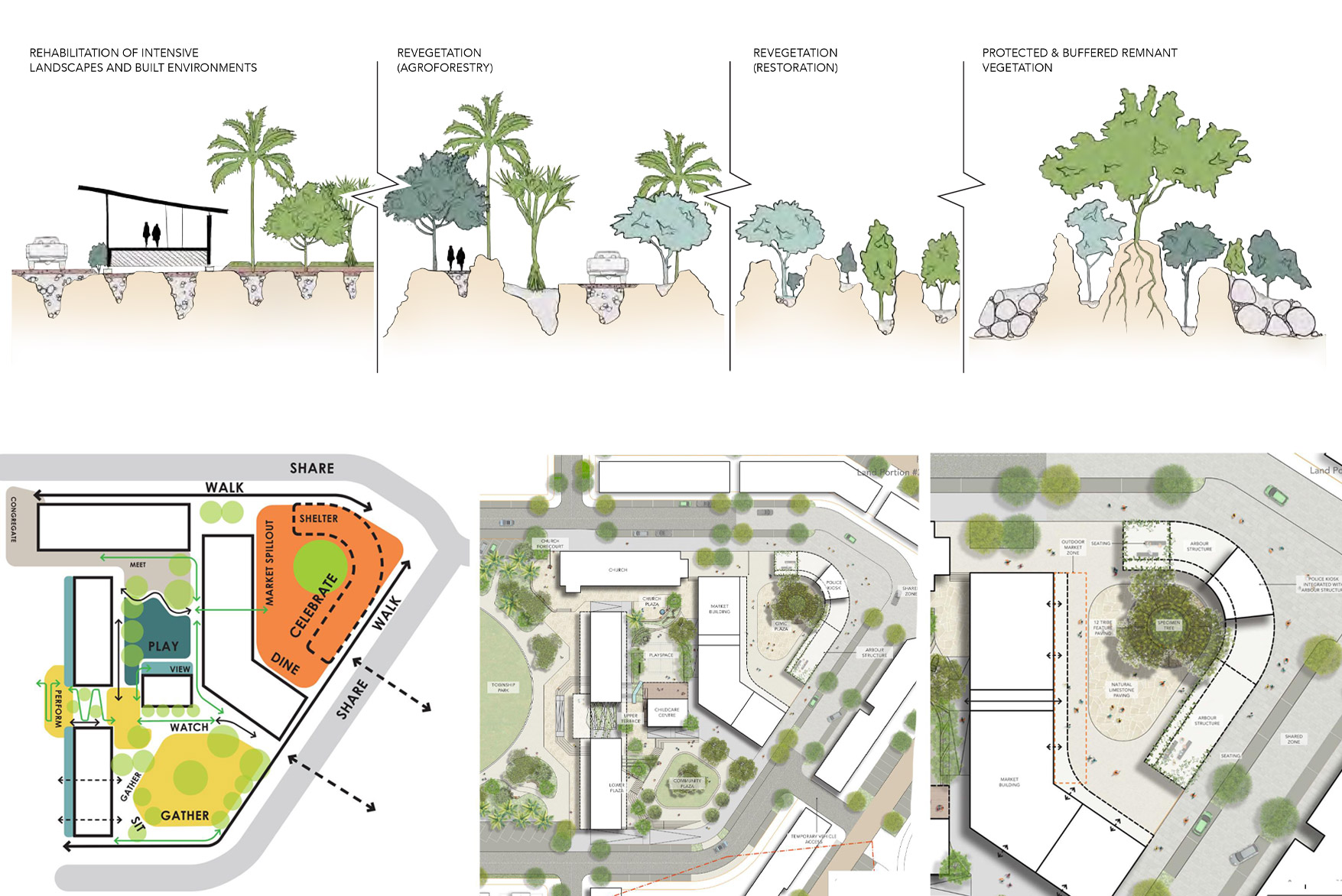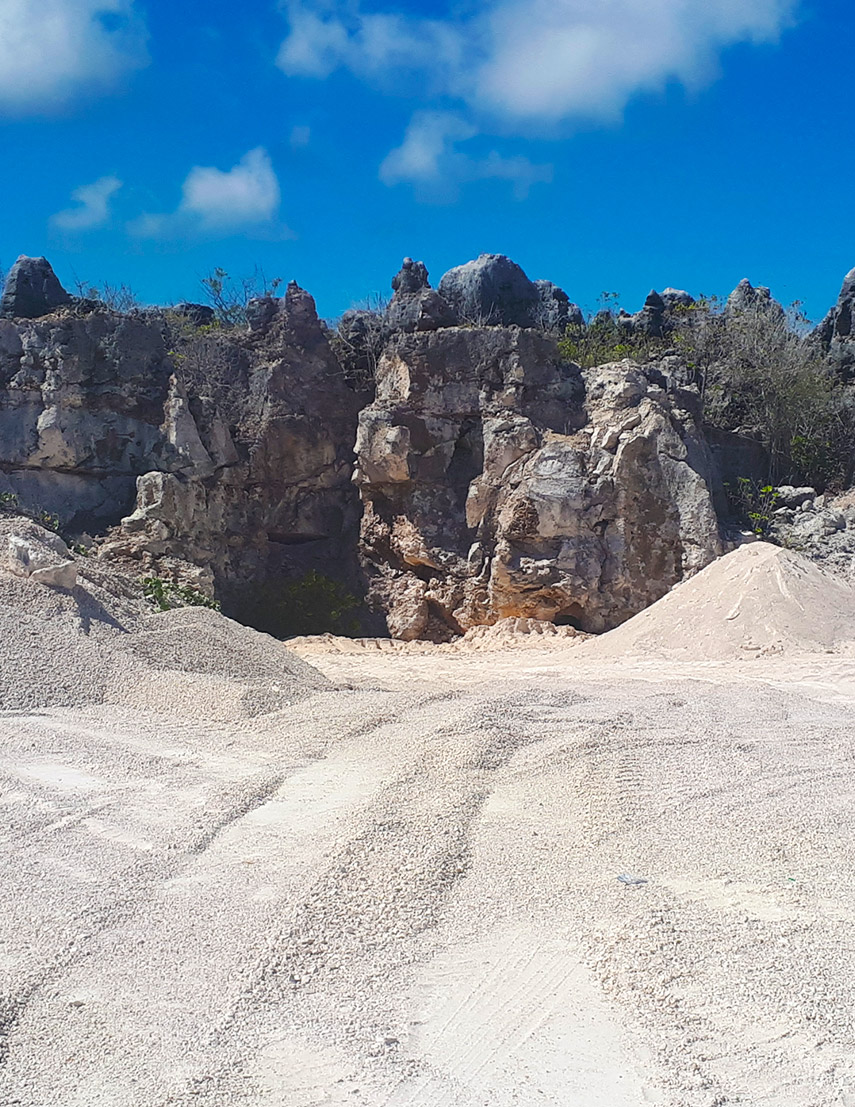Boffa Miskell led a multidisciplinary team, including landscape architects, planners, engineers, ecologists, biosecurity experts, and specialists in agro-economics, aquaculture, agritech, customary land tenure, cultural landscapes, and sustainable energy, to assess and plan land use transformation. The team worked closely with government departments and community representatives.
The project built upon extensive research from multiple agencies, directly communicating with report authors when possible. Boffa Miskell collaborated with local experts to analyse the island’s ecological and socio-cultural context, developing strategies for public spaces, movement networks, and green infrastructure. Fraser Thomas Ltd contributed expertise in engineering, transport, wastewater, stormwater, solid waste, power supply, and communications.
HGI project teams conducted multiple site visits for reconnaissance, surveys, and workshops. These included assessments during both dry and wet periods (2019-2022) to monitor groundwater salinity and the resilience of flora and fauna.
Boffa Miskell also engaged with local artists, tradespeople, agroforestry and aquaculture experts, livestock managers, ethnobotanists, ecological restoration specialists, small business owners, and cultural heritage experts. Working with ClimSystems, the team prepared a climate change risk assessment to inform strategies for managed migration, water and energy security, agriculture, housing, and fisheries development.
Geospatial data from multiple sources was enhanced through a digital terrain model in collaboration with the Nauru survey department, with mapping refined through ground-truthing.
A key outcome, the ‘Environmental Rehabilitation + Sustainable Resource Planning’ document, outlines strategies to support Nauru’s national security and long-term sovereignty, including:
- Economic diversification and food security to boost production, improve trade balance, and increase access to fresh, healthy food
- Education and training programs to develop skills for new industries and community development on topside land
- Sustainable energy and water solutions to support resilient infrastructure and agricultural growth
- Environmental and cultural restoration to revive the natural landscape and reconnect Nauruan society with its cultural heritage post-mining
As an initial implementation step, the HGI Steering Committee, comprising key government leaders, launched the Republic of Nauru Phosphate Corporation /NRC Joint Collaboration Project, a 10-hectare cornerstone development on government-owned land, to pilot these strategies.




